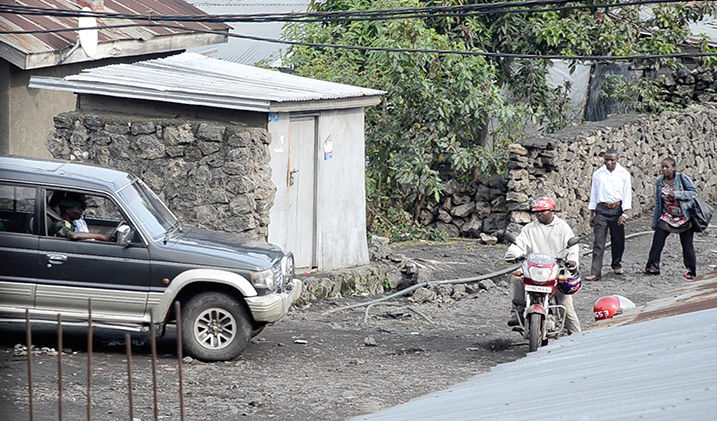Worldwide window views shatter foreign stigmas through video project
British artist Gillian Wearing’s new project is collecting window views from different countries. Fabrice Elikya Etudiant submitted a photograph from Goma in the Democratic Republic of the Congo.
February 29, 2016
Personal views can shape individual perspectives, but sharing those views might bring everyone new insights, British photographer Gillian Wearing said.
Her latest visual art project showcases the collective window views of individuals around the world in a collaborative video called “A View Of The World From Your Window.”
The video, set to be showcased at the Brighton Festival exhibition in England this upcoming May, attempts to show mixed vistas from different countries as a way to break down misconceptions.
The project is expected to be completed in time for the festival and will feature a wall on which Gearing will write participants’ names next to their locations.
Wearing’s work has also been featured at the Museum of Modern Art in New York, the Tate Modern art gallery in London, South by Southwest and the Los Angeles Film Festival.
In 1997, Wearing won the Turner Prize—an annual award presented to British visual artists under the age of 50. She said in a Feb. 23 emailed statement that the collaborative project was inspired by people’s limited views from their windows. She said she wanted to show a series of individual perspectives to a broader audience to let viewers experience different realities without physically being there.
“I was interested in doing a global project—one that unites everyone in an elegant way—and I feel this does that,” Wearing said.
Wearing said she gathered about 350 submissions from artists worldwide, but she wants to get a view from every country. The only one she sees as challenging is North Korea.
Wearing said people sometimes form opinions of other countries through the news.
“I have some views of places you would imagine that location to be,” Wearing said. “But, on the whole, nearly every location is not something you would immediately think of when you see the view.”
She said all the submission views surprise her and gave personality to the person shooting the footage. The submissions show the consideration and dedication of the participants, she added.
“I love the unexpected,” she said. “What people bring to a project is always more interesting than what I can foresee.”
Lynne Warren, curator at the Museum of Contemporary Art in Chicago who specializes in organizing photography exhibitions and is familiar with some of Wearing’s work, said the project focuses on identity, but not in a traditional sense of race or culture.
“The concept is driven on psychological identity of people—as opposed to their skin color or cultural background—which most people think of [when] artists deal with identity,” Warren said.
She said the project is similar to the work of British photographer Martin Parr, who crafts local traditions through postcards and posters.
Contrary to most photography work, Warren said Wearing is letting go of the photographer’s role and assigning authority to the participants to photograph views.
“She is still looking out through her eyes but [also] through the eyes of an individual that she may not know who they are,” Warren said. “It is taking the concept and putting it out there and in a way which is kind of scary for the artist. [It’s hard to] let go of the control of facing your subject and photographing it and filming it.”








